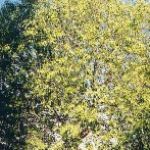| Common Name: |
Indian Sandalwood |
| Other Names: |
White Sandalwood |
| Botanical Name: |
Santalum album |
| Genus: |
Santalum |
| Family: |
Santalaceae |
| Native Location: |
Probably native to coastal Malaysia and Indonesia |
| Cultivation: |
Well-drained, moist, fertile soil in partial shade. |
| Propagation: |
By seed sown when ripe, pre-soaked in a 1:9 solution of bleach, sown in vermiculite at 15-21°C (59-70°F). Seedlings are planted alongside host when roots reach 4cm (1½in) long. |
| Harvest: |
Trees over 50 years ols are felled for heartwood. Wood is dried for use in decoctions, liquid extracts, powders, and tinctures. Oil is pressed or extracted from heartwood and roots. |
| Height: |
5-10m (15-30ft) |
| Width: |
3m (10ft) |
| Hardiness: |
Min. 15°C (59°F) |
| Parts Used: |
Heartwood, roots, oil. |
| Properties: |
An aromatic, bittersweet, astringent herb that cools the body, calms the mind, relieves spasms, and improved digestion. It has diuretic, analgesis, and antiseptic effects. |
| Medicinal Uses: |
Internally for genito-urinary disorders, fever, sunstroke, digestive problems, and abdominal pain. Externally for skin complaints. |
| Culinary Uses: |
Essence is used to flavor syrups and Indian milk desserts. |
| Economic Uses: |
Sapwood is used for carved objects. Ground wood provides a Hindu caste-mark pigment. Oil is used in perfumery, soaps, body oils, food flavorings, and incense. |
| Bibliography: |
Encylopedia of Herbs by Deni Brown Copyright ©: 1995, 2001 Dorling Kindersley Limited pg 359
|

